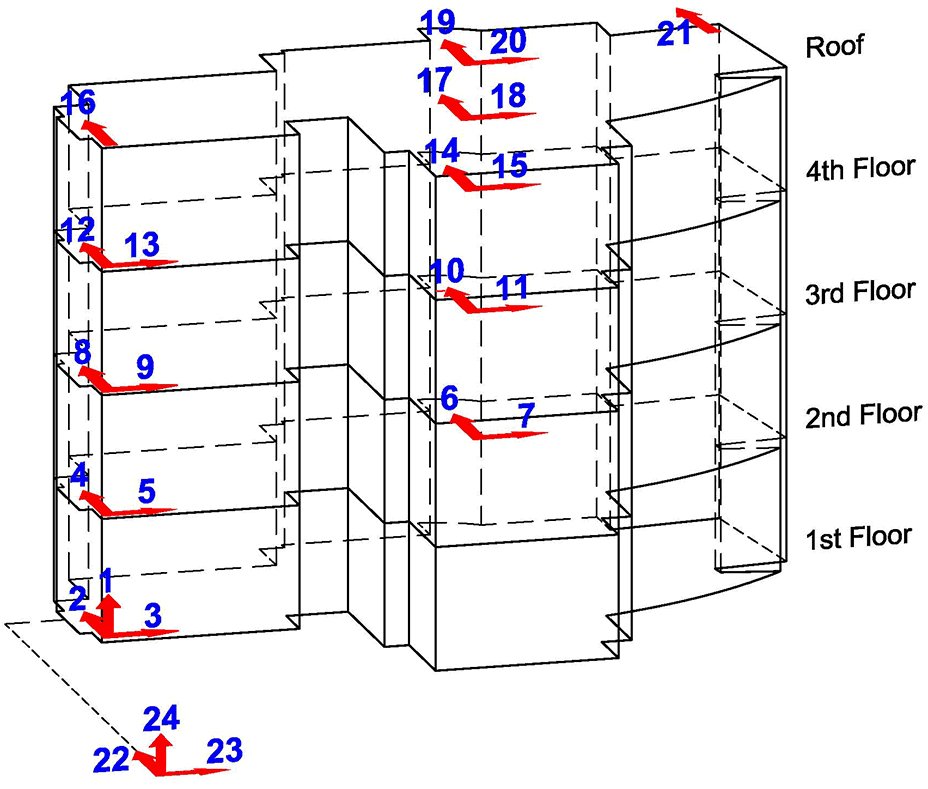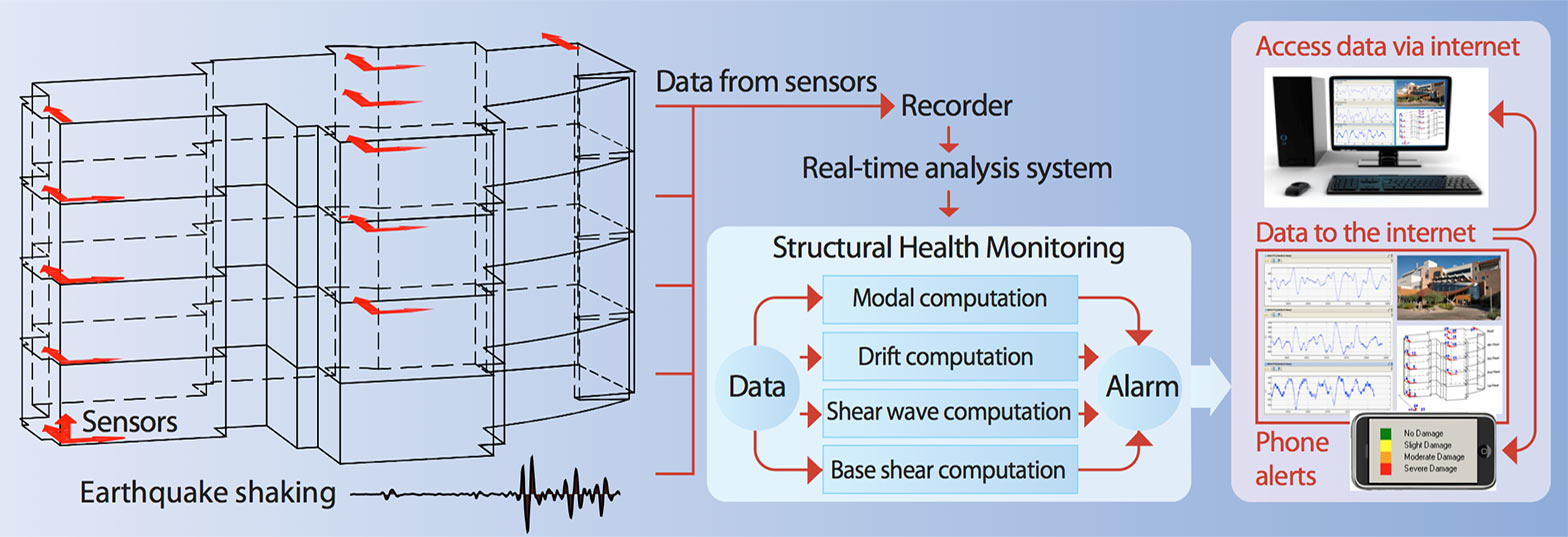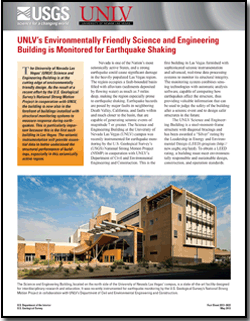The Science and Engineering Building at the University of Nevada Las Vegas (UNLV) campus has been recently instrumented for earthquake monitoring by the National Strong Motion Project (NSMP) of the U.S. Geological Survey (USGS) in collaboration with the UNLV’s Department of Civil and Environmental Engineering and Construction. This is the first building in Las Vegas furnished with a sophisticated seismic monitoring system to monitor its structural integrity in near real-time. The monitoring systems, combining sensing technologies with an on-site computer, show how earthquakes affect the structure, providing invaluable information that can be used to judge the safety of the building after an event and to design safer structures in the future.

The Science and Engineering Building, located on the north side of the UNLV campus, is a state-of-the-art facility designed for interdisciplinary research and education.
The UNLV Science and Engineering Building instrumentation is more unique than any building instrumented before. This particular structure has been awarded the Silver rating by the Leadership in Energy and Environmental Design (LEED) program. In order to obtain a LEED rating, the building must meet environmentally responsible and sustainable design, construction, and operation standards.
This is the first environmentally friendly building instrumented by the NSMP, and the only building monitored for earthquake shaking in Las Vegas. The intention of instrumenting this particular steel building is to see how buildings that are designed with the environment in mind, hold up to the strong lateral forces created by earthquakes. It is intended to use the obtained data from the sensors and the building to improve on environmentally friendly designs.
USGS Uses Advanced Sensing Technologies

UNLV’s environmentally friendly Science and Engineering Building is equipped with an advanced earthquake monitoring systems. Red arrows in the schematic diagram show the locations and indicate the directional sensitivity of the seismic sensors from the first floor through the building’s four stories to the roof.
Download a 2D sensor layout diagram depicting the location of seismic joints and other details.
The UNLV Science and Engineering Building has a seismic array of 21 motion sensors installed. These sensors are strategically located in each floor where the maximum building response during a ground shaking is expected, mostly at the edges. Every story has at least two seismic motion sensors oriented horizontally in two orthogonal directions to detect building motion along the reference east-west and north-south directions. Floor rotation around the vertical axis can be computed from the recordings of the two sensors pointing same direction but located at different points. The building also has a triaxial sensor located on the first floor, which records the input motions in three orthogonal directions at this level. Specifically, the building’s instrumentation is designed to record and compute:
- The swaying and twisting of the building
- The time it takes seismic waves to travel from the foundations to the roof
- How the frame of the buildings changed during the earthquake
Other triaxial seismic motion sensor located away from the building records free-field ground shaking without any interference with the building to provide input for USGS ShakeMaps. These graphics depict ground motion and shaking intensity after significant earthquakes, giving a visual representation of a quake’s behavior and impact for emergency response.
Structural Health Monitoring and Damage Detection
It is imperative to monitor the condition of UNLV’s one of the most important buildings in near-real time in order to be able to assess its structural integrity immediately after a major catastrophic event. Structural health monitoring will be achieved by implementation of an open-source on-site data analysis system. This innovative system provides information about how buildings move and distort during shaking, and where damage likely occurred. Several independent algorithms check for variations in movements of a building frame and its vibration characteristics, for travel time of seismic waves between foundation and roof, and for exceedance of the building’s seismic design capacity.
The obtained real-time data is also available to UNLV’s faculty and engineering students through an on-site computer to study and understand the building’s vibration characteristics and response during earthquakes.

Flow chart showing the functioning of a real-time earthquake monitoring system for instrumented buildings. This system will provide important information on the structural health of the building. After a significant earthquake, its near-real time data analysis capabilities will help to rapidly assess building safety.
Fact Sheets
-
UNLV’s Environmentally Friendly Science and Engineering Building is Monitored for Earthquake Shaking

USGS Fact Sheet 2013–3022, by Erol Kalkan, Woody Savage, Shahneam Reza, Eric Knight, and Ying Tian
Frequently Asked Questions
Structural Health Monitoring FAQs
 Jump to Navigation
Jump to Navigation